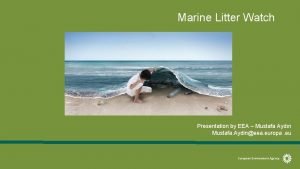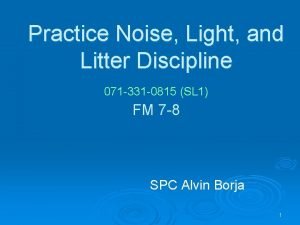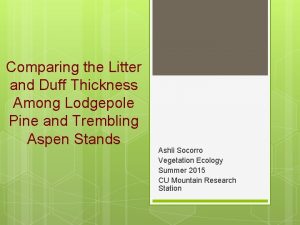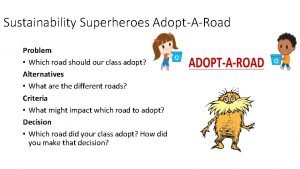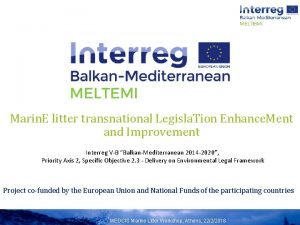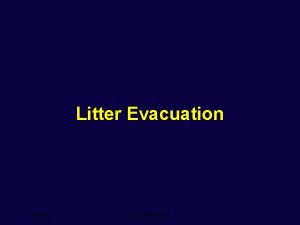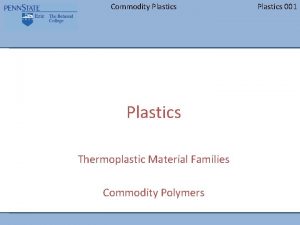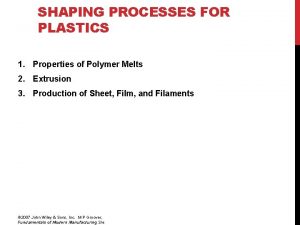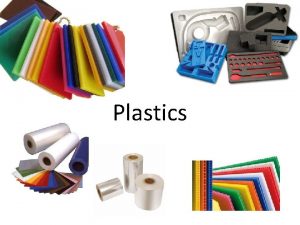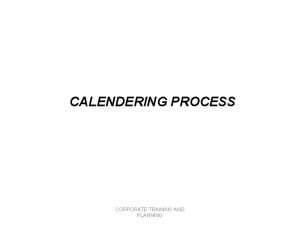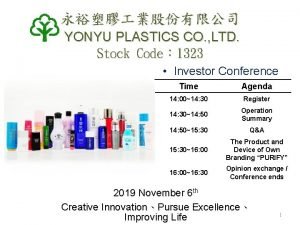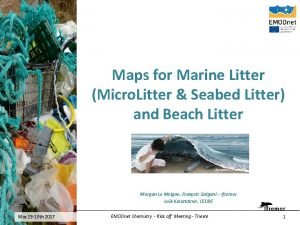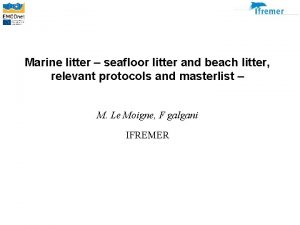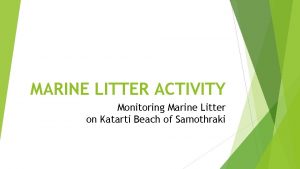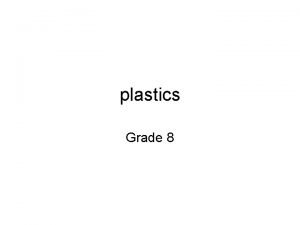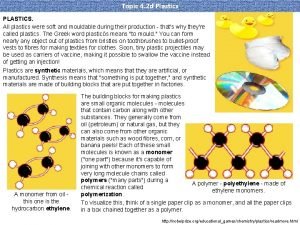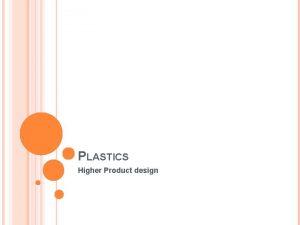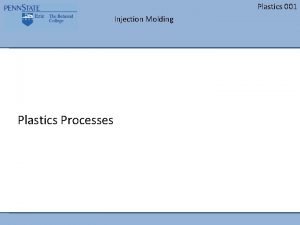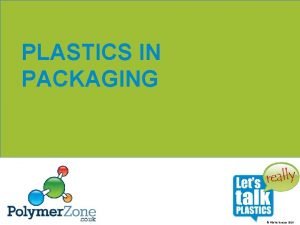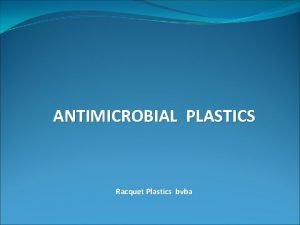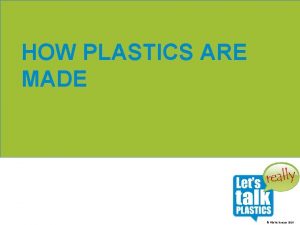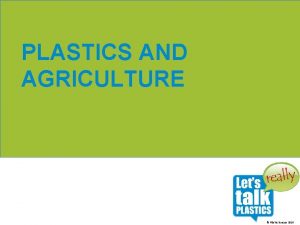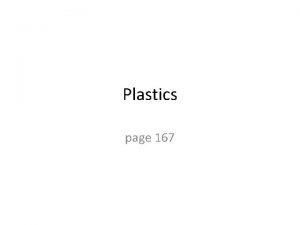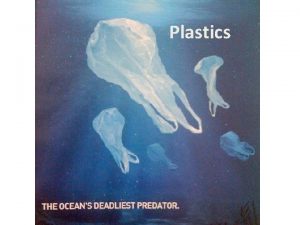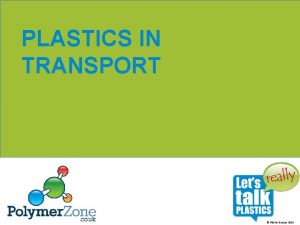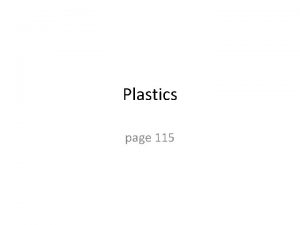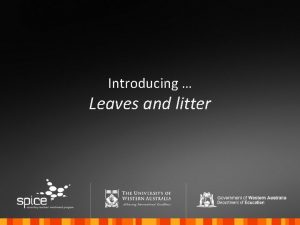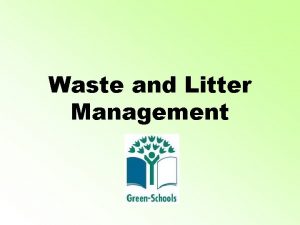IMPACT OF MARINE LITTER ESPECIALLY PLASTICS ON THE



















- Slides: 19

IMPACT OF MARINE LITTER ESPECIALLY PLASTICS ON THE AFRICAN MARINE ENVIRONMENT 4 TH Association of African Maritime Administration Conference hosted by Egypt Savoy Hotel, Sharm El Sheikh 16 – 19 September 2018 Mfon Ekong Usoro Secretary General Abuja Mo. U on Port State Control for West and Central Africa

Content q Plastic litters on the African marine environment q Impact analysis of plastic litters on the marine environment q Extant liability regime towards safeguarding the marine environment – country, regional and continental levels q Factors militating against control of menace q Way out 2

Plastic Litters on the African Marine environment Ø According to the Environmental Law Institute (ELI) for the United Nations Environment Programme (UNEP), plastics are estimated to make up as much as 95 percent marine litter found on coastlines, sea surface and the ocean floor. Ø An estimated 4. 8 million to 12. 7 million metric tonnes of plastic entered the ocean from land-based sources in 2010, and about 8 million metric tonnes has entered the oceans each year since then. Ø Asides the oceans, marine plastic has been a problem within Africa Inland Waterways. Significant study has shown that plastic and microplastic (<5 mm in size) have become the major pollutant in Africa’s Lakes, Dams and Rivers. 3

Plastic litters on the African Marine environment contd. Ø In the seas off the coast of Southern Africa, and the adjacent ocean marine, plastic has been the major cause of aquatic specie entanglement. Ø The major source of marine plastic in African marine environment has been uncontrolled dumping of plastic within the ocean bodies. Ø Another major source of plastic emission to the world oceans are River plastic emission. Ø It is estimated that between 1. 15 and 2. 41 m metric tons of plastic currently enters the oceans every year via rivers. African Rivers are among the most polluted by plastic world wide. 4

Impact analysis of plastic litters on the African Marine environment Ø Growing interest in the blue economy makes it important that the scale of impact of marine litters on the African marine environment be given a keen attention. This is in view of the potential of this source of economic development to be undermined by pollution. Ø The impact of plastic litter on African Marine environment can largely be subdivided into: • Environmental impact • Economical impact 5

Impact analysis of plastic litters on the African Marine environment contd. The major impact of marine plastic litters environmentally includes: Starvation of species due to ingestion of large amount of plastic under the mistaken guise of food The manner in which plastic absorbs and bio accumulate toxic chemicals which in turn affect the aquatic species. Entanglement and Injury caused from plastic rubbish and abandoned fishing gear Indirect impact across the food chain as a result of bio magnification of plastic related pollution via the ingestion of plastic contaminated species Absorption into the human body can potentially disrupt cellular process and degrade tissues.

Impact analysis of plastic litters on the African Marine environment contd. The major impact of Marine Plastic economically includes: Huge cost involved in waste management and coastal cleanup Reduced aesthetic appeal leading to loss of revenue from tourism Maintenance of public drainage system connecting to rivers and ocean which has been blocked by plastic litters What we see floating on the surface accounts for only 5% of all the plastic litter that has been dumped into the sea. According to Ocean Conservancy, a U. S environmental non-profit, the other 95% is beneath the surface where it strangles underwater creatures and wrecks aquatic ecosystem.

Extant liability regime towards safeguarding the African Marine environment United Nations Convention on the Law of the Sea MARPOL 73/78 London Convention LIABILITY REGIME The Basel Convention Customary Law Bamako Convention (Africa) 8

Extant liability regime towards safeguarding the African marine environment contd. Ø The United Nations Convention of the Law of the Sea v Replete with provisions mandating states to guard against pollution of the marine environment – Articles 1. 4, 194. 1, 194. 2, 194. 3, and 194. 5. Ø MARPOL 73/78 (International Convention for the Prevention of Pollution from Ships) v Developed by the International Maritime Organization in order to prevent pollution of the marine environment from ships by waste dumping, oil spillage and air pollution. Ø London Convention (1972 Convention on the Prevention of Marine Pollution by Dumping of Wastes and other Matter) – 1996 Protocol v Incorporates Articles that forbid states from causing or permitting marine plastic pollution from both marine and terrestrial sources, either directly or indirectly. Ø The Basel Convention (Convention on the Control of Transboundary Movements of Hazardous Wastes and their Disposal) v Indicates that if one state allows wastes to move across international boundaries into the territory of another state in any way, without both notifying and obtaining the consent of the receiving state, that is ‘illegal traffic’. 9

Extant liability regime towards safeguarding the African marine environment contd. Ø Customary Law v This is the international version of ‘common law’, which reflects the accrued norms of behavior between states. An understood precept of customary law is the prohibition of transboundary harm from one state to another. (Artists Project Earth: 2017) Ø Bamako Convention (The African Union’s 1994 Convention on the Ban of the Import into Africa and the Control of Transboundary Movement and Management of Hazardous Wastes within Africa) v This was modelled on the Basel Convention for application to African needs, specifically to explicitly prohibit the import of any hazardous waste. v Definition of hazardous waste under Article 2 of the Convention to include substances with qualities which include “…eco-toxic substances or wastes which if released present or may present immediate or delayed adverse impacts to the environment by means of bioaccumulation and/or toxic effects upon biotic systems”. v The definition appears to fit very well with marine plastic pollution, which is known to bio accumulate both at a microscopic level, with micro plastic particles being ingested by small fish, barnacles and other shellfish; and at a macro-level with seabirds and cetaceans frequently found to have large numbers of plastics objects in their digestive tracts. (Artists Project Earth: 2017) 10

Extant liability regime towards safeguarding the African marine environment contd. v Furthermore, as under the Basel Convention, indeed Parties can define classes of wastes as ‘hazardous’ in their domestic law (as set out in Articles 2, 3) and so bring them under the scope of the Bamako Convention. Ø There also a number of other instruments which are relevant to marine litter in Africa. For instance: v The Abidjan Convention (1984 Convention for Co-operation in the Protection and Development of the Marine and Coastal environment of the West and Central African Region and Protocol) § The Convention which covers the marine environment, coastal zones and related inland waters falling within the jurisdiction of the states of the West and Central African Region, mandates signatories to establish national laws and regulations for the prevention, reduction, combat and control of pollution in those regions. v The Nairobi Convention (1985 Convention for the Protection, Management and Development of the Marine and Coastal Environment of the Western Indian Ocean) amended 2010 § The Convention applies to the Western Indian Ocean covering the Eastern and Southern Africa region. The signatories are states or regional inter-governmental integration organization located within the region. 11

Extant liability regime towards safeguarding the African marine environment contd. § Just like the Abidjan Convention, the Nairobi Convention mandates signatories to, individually or jointly, take all appropriate measures to prevent, reduce and combat pollution of the Convention area, and to ensure sound management of natural resources. v The Barcelona Convention (1976 Convention for the Protection of the Marine Environment and Coastal Region of the Mediterranean) 1995 § The Convention, revised in 1995, was adopted to prevent and abate pollution from ships, aircraft and land based sources in the Mediterranean Sea. This includes but is not limited to dumping, run-off and discharges. Signatories to the Convention, which includes our host, Egypt, agreed to cooperate and assist in dealing with pollution emergencies, monitoring and scientific research. § The key goal of the Convention is essentially to prevent, reduce, combat, and, as far as possible, eliminate pollution in the zone of the Mediterranean Sea. Ø Having highlighted these legal instruments, it remains to mention that in terms of enforcement, it is worthy of note that it is only a sovereign state that has the legal standing to take legal action in international law. Ø It is also noteworthy that several African Union members that should be taking action on marine plastic pollution are not yet parties to these Conventions. 12

Factors militating against control of menace Increase in the production of plastic product and materials remains the most important challenge in dealing with plastic litter Other militating factors: Lack of enforceable legislation within individual countries to control marine plastic litter Lack of proper waste disposal system within Sub-Saharan Africa countries Inadequate/untapped recycling plant Lack of proper awareness among the people on the need to properly dispose plastic waste. 13

Way Out 1 Ban/reduction of plastic usage: the Rwanada example (Since 2008, Rwanda banned use of plastic bag). Restrictions exist in Uganda, Cameroon, Kenya, etc. 2 Improving Africa waste disposal, collection and management structure: The Beijing experience (where recyclable plastics are accepted in exchange for public transport fare credit) 3 Development and implementation of laws to banish or diminish production of single-use trash items and other waste that is commonly found in marine litter 4 Elimination of source of waste - regulation of non-recoverable items such as plastic microbeads in personal care and cosmetics products 5 Recycling marine plastic waste for commercial use. However, only less than 14% of all plastic is recyclable 14

Way Out - Commercial use JERSEY MAKING Recycled marine plastic is used in the production of sport wears. Adidas is pioneering this initiative. Jerseys of big teams such as Real Madrid, Juventus, Bayern Munich and Manchester United are being made from recycled ocean plastic CARPETS Recycled plastic can be used in the production of carpets. 15

Way Out - Commercial use contd. Other commercial uses to which plastic could be recycled into include: Kitchen Ware Traffic Cones Trashbags Films and Sheeting Packaging materials

Conclusion NEXT STEPS AGGRESSIVE SENSITIZATION PROGRAMS TO EVOKE ENVIRONMENTAL CONSCIOUNESS Thank you 17

References Ø Two Oceans Aquarium (2018), The Plastic Problem: How much plastic pollution is in our ocean. Available at https: //www. aquarium. co. za/blog/entry/The-plastic-problem-How-much-plastic-pollution-isin-our-ocean Ø Wartsila (2017), Africa’s war on Plastic. Available at https: //www. wartsila. com/twentyfour 7/environment/africa-s-war-on-plastic Ø Africa. Renewal Online (2017), Plastics pose biggest threat to oceans. Available at https: //www. un. org/africarenewal/magazine/may-july-2017/plastics-pose-biggest-threat-oceans Ø Artists Project Earth (2017), Ocean Plastics Legal Initiative. Available at http: //apeuk. org/wpcontent/uploads/2017/10/OPLI-v 4 -1. pdf Ø Jambeck, J. (2017), Marine Policy. Available at https: //www. sciencedirect. com/science/article/pii/S 0308597 X 17305286? via%3 Dihub Ø Environmental Law Institute for the United Nations Environment Programme (2016), Marine Liiter Legislation: A Toolkit for Policymakers. Available at https: //www. eli. org/sites/default/files/elipubs/marine-litter-legislation-toolkit-policymakers. pdf Ø Peter G. Ryan, The Marine Plastic Debris Problem Off Southern Africa. Available at https: //swfsc. noaa. gov/publications/TM/SWFSC/NOAA-TM-NMFS-SWFSC-154_p 85. PDF 18

Thank you for listening Mfon Ekong Usoro B. Sc (Hons) Sociology (Unical); LL. B (Hons) (Buckingham); LL. M - Maritime Laws(University College London); B. L - Nigeria 19
 Marine litter watch
Marine litter watch Light discipline
Light discipline Difference between litter and duff
Difference between litter and duff Keep quiet. you mustn't
Keep quiet. you mustn't What is litter
What is litter You mustn't drop litter
You mustn't drop litter Marin litter
Marin litter Litter picking contracts
Litter picking contracts Litter queen
Litter queen Litter evacuation
Litter evacuation Commodity plastic
Commodity plastic High shear
High shear Maico plastics
Maico plastics Renato moretto
Renato moretto Plastics
Plastics Plasics
Plasics Calendering
Calendering Yonyu
Yonyu Phillips plastics corp
Phillips plastics corp Why do different polymers have different properties
Why do different polymers have different properties
